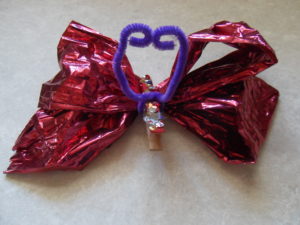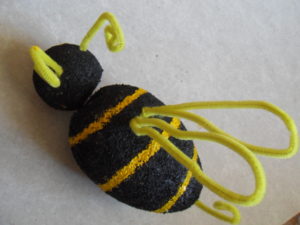BUTTERFLY
Butterflies belong to the order of Lepidoptera which means “scaly wings.”
Butterflies and moths live in high mountains, warm tropical rainforests, the Artic tundra, deserts and swamps. Some pollinate flowers but some are also pests. They help the environment by providing food for bats lizards, frogs and birds.
Scientists have discovered one million creatures in the animal world; ¾ of these are insects. Of these, 18,000 to 20,000 different kinds of butterflies have been identified.
During the fall, monarch butterflies fly as far as 3,000 miles to their winter homes. None of them return to their place of origin because few of the live longer than a month. Only some butterfly species can journey very far.
Materials:
Paper Twist or similar wide wire ribbon (color of choice)
Chenille stems (color of choice)
Clothespin
sequins, glitter, markers, etc.
Project:
- Unfurl the twist and lay one end down on a smooth surface. Determine the length. For example, if you choose to make a 6” butterfly, unfold it, and lay down 6” of twist going in one direction. Lay down another 6” going in the other direction. Continue in this manner until you have 3-4 loops of twist on each side. Cut off any excess.
- Pinch the twist loops in the center with a clothespin.
- Decorate the clothespin with sequins, glitter, markers, and other craft items.
- Take two chenille stems and wrap them around the clothespin. Curl the ends so that the stems look like antenna.





